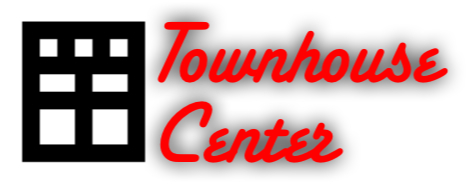 More from the Community Architect blog post series about rowhouses in Baltimore and elsewhere. Excerpt from 2011-07-20: "Even after having surveyed over a hundred Baltimore rowhouses and designed the 'full gut' rehab plans for them, there always new experiences. Only if we have the patience and endurance to fill the city block by block with folks that prefer urban living over suburban will we be able to contain sprawl, stabilize once glorious neighborhoods, bring services back into 'food deserts', reduce tax rates, and bring Baltimore back as a great city."
From 2012-08-26: "The standard American rowhouse is made from brick and timber, with bearing brick walls on the sides. The party walls bear the timber beams (joists) that span the entire width of the building. Since regular lumber cannot span much beyond 16' or so, most rowhouses max out around that dimension, just enough for a good bedroom or a living room, not really enough to comfortably place two rooms side by side.
More from the Community Architect blog post series about rowhouses in Baltimore and elsewhere. Excerpt from 2011-07-20: "Even after having surveyed over a hundred Baltimore rowhouses and designed the 'full gut' rehab plans for them, there always new experiences. Only if we have the patience and endurance to fill the city block by block with folks that prefer urban living over suburban will we be able to contain sprawl, stabilize once glorious neighborhoods, bring services back into 'food deserts', reduce tax rates, and bring Baltimore back as a great city."
From 2012-08-26: "The standard American rowhouse is made from brick and timber, with bearing brick walls on the sides. The party walls bear the timber beams (joists) that span the entire width of the building. Since regular lumber cannot span much beyond 16' or so, most rowhouses max out around that dimension, just enough for a good bedroom or a living room, not really enough to comfortably place two rooms side by side.
"This simple fact pretty much determines the layout of the rowhouse: One room in the front right behind the entry door is the living room or parlor, behind it there must be a stair to get up and down (Baltimore rowhouses all have a basement), an area to eat and the kitchen. Upstairs you can then fit two bedrooms, one in the front and one in the back with a bathroom somewhere in the middle or side by side with the rear room, to line the pipes up with the kitchen below.
"A house that is between 10" and 16" wide and often up to 50' deep would have serious problems with daylight. All rooms somewhere in the middle would have no light at all. To avoid this problem, almost all rowhouses have a rear area that is 2' to 3' skinnier than the front, allowing for space between it and the neighbor. If the neighbor does the same thing mirrored on the property line, you get a four to six foot distance."
From 2012-09-06: "How is that rowhouses make community and the urban renewal towers did not? They do not require concrete nor steel or big equipment. They can be built incrementally and block by block, ideal for small investors, speculators and local builders. It works equally well as a starter home and as a retirement home. It works for children (direct access to a yard) and it can grow with a family (up and back).
"The rowhouse with its orientation to the street is an urban housing type and as such conducive to building 'community'. Baltimore's stoops are famous for the chat from neighbor to neighbor. The corner house can accommodate a store or a bar with no problem. It also can become a live-work unit for an artist or a professional offering public service at a small corner business."
